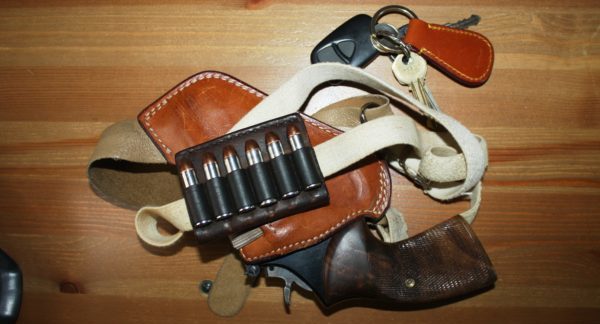
A year-end report from the Washington State Department of Licensing reveals the state added more than 57,000 active concealed pistol licenses to its already swelling numbers in 2022, ending the year with just over 696,000 CPLs in circulation, according to TheGunMag.com.
It was an interesting number, falling short of what had appeared in early December to be a surge toward setting a new record of 700,000 licenses by New Year’s Day. In a politically “blue” state—at least on the national level—it is also an eye-opener.
Despite the setback, there is no indication of a looming slowdown in the number of CPL applications. Coupled with continuing reports of police manpower shortages and looming gun control efforts as the Legislature is set to convene, roughly 10 percent of eligible adults in the state have obtained carry licenses, and approximately one-fourth of them are women.
Last year saw two months when the number of active CPLs genuinely surged. In June, the state added 11,292 active licenses. Two months later, in August, the number surged again by a whopping 21,180 CPLs.
While the year-end data shows a dip of 1,758 total active licenses, it is significant to note only one of the state’s four most populous counties lost ground. King, which encompasses Seattle, actually added a few hundred licenses, as did Spokane County on the Idaho border. Pierce County, immediately south of King, added less than a hundred, but Snohomish County on King’s north flank lost about 200.
Washington is an interesting state for several reasons. Until a few years ago, the state had what many gun owners considered good gun laws. An open carry state with a strong tradition of gun ownership, and a concealed carry statute dating back to the 1930s, the Evergreen State was also a pioneer in the realm of state preemption, adopted first in 1983 and amended in 1985, coincidentally the year the National Rifle Association held its annual convention in Seattle.
The state constitution has one of the strongest right-to-bear-arms provisions in the nation: “The right of the individual citizen to bear arms in defense of himself, or the state, shall not be impaired, but nothing in this section shall be construed as authorizing individuals or corporations to organize, maintain or employ an armed body of men.” Right-to-bear-arms state provisions are found at the Second Amendment Foundation website.
There has been a gun control lobbying effort in the state for several years, and in 2014, the Alliance for Gun Responsibility was created to push through a gun control initiative requiring so-called “universal background checks” on all but a limited type of gun transfers/transactions.
The following year, the number of homicides was 209 including 141 involving firearms, according to FBI Uniform Crime Reporting data.
In 2018, the billionaire-backed Alliance pushed through another initiative, this one prohibiting young adults from purchasing and owning so-called “semiautomatic assault rifles,” and also requiring training for any adult buying such a firearm. In 2019, according to FBI data, there were 194 slayings including 135 involving guns. For a moment, anti-gunners appeared to have a victory. But then came 2020 and 2021, and homicides spiked dramatically upward. In 2020, the year which saw rioting and the creation of a “CHOP Zone” in Seattle, along with the COVID-19 pandemic, the state logged 298 murders including 177 involving firearms. In 2021, there were an estimated 325 slayings in the state, including 209 in which guns were used. This paralleled police manpower losses and added restrictions on law enforcement.
Between 2014 and 2020, homicides more than doubled in Seattle, from 23 to 53. There was a dip in 2021 to 43 murders, but 2022 brought 57 slayings, according to the Seattle Homicide Twitter page (not connected to the Seattle Police Department). There has already been one murder in Seattle in 2023, the site says.
For a period of several months starting in 2020 and ending in 2021, CPL numbers declined by several thousand, but once law enforcement agencies began accepting applications again, the numbers soared. Last year began with 639,298 active licenses on Jan. 3, and one year later, the Department of Licensing reported to TGM there are 696,438 CPLs in circulation.
It will take another month, perhaps two, in order to tell whether the number has plateaued or will continue to rise.